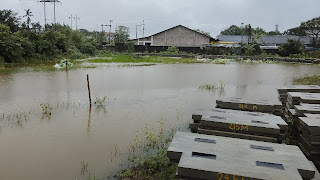What to do if the excavation pit is waterlogged? Or what are the procedures you have to follow for dewatering the excavation pit? All these things seem to be minor, but actually not so. You have to take a long step to do it, and also have high thinking. You already know, how waterlogging occurs. Due to heavy rainfall or continuous rainfall, the area gets flooded and thus waterlogging occurs. But what happens, if your construction site or the excavation you have done for RE Wall gets waterlogged? So there are various steps you should have to do as follows:
First of all, you cannot do dewatering directly if you see the water level rising up to the ground surface. You have to wait for some days for the sun to appear and to evaporate it. After that you can bring the water pump to dewater the excavation pit. Since the Sun cannot evaporate all the flooded water at once. It will need days to evaporate it or even a week.
And if the sun appears one-or-two days and again the rainfall occurs, then it will be the same condition as before. So for these you have to wait till the flooded water lowers down/evaporates up. And when the water level is below the water table then ready for dewatering work.
Second, for dewatering work, you have to do one step before. If any cement bags or sack bags are there, or left out anywhere throwing after use, you put some sand in it. So that you can put it them layer by layer or even barrier by barrier. So that you can dewater it part-by-part. Like this








Comments
Post a Comment
Please do not enter any spam comment.